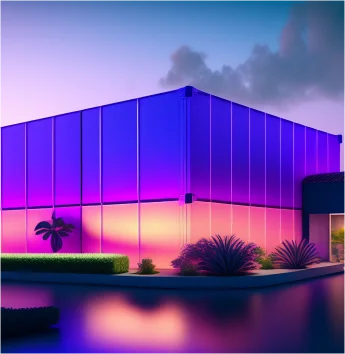“Intelligent light illuminates not just our spaces, but our future.”
The lighting industry is undergoing a radical transformation, driven by rising customer expectations, intensifying competition, and the urgent need to address climate change. Smart lighting control systems, powered by artificial intelligence (AI), are no longer a futuristic concept but a present-day reality, enabling us to create more efficient and intelligent building environments. This article about intelligence of light explores how AI is reshaping lighting design, from energy-efficient LEDs to AI-powered sensors and the impact of tools like ChatGPT and DALL-E.
“Intelligent use of intelligence of light technology is the future for sustainable planet”
The Dawn of Intelligent Lighting
John McCarthy, a pioneer in the field of AI, defined it as “the science and engineering of making intelligent machines, especially intelligent computer programs.” Today, AI is empowering us to translate sustainable design ideas into intelligent products and transform visions into reality. Augmented reality and AI-driven lighting components are already integral parts of smart building systems.
Take LEDs, for example. While they offer inherent advantages like long lifespans and low energy consumption, their true potential is unlocked through smart lighting controls. These systems automate energy efficiency and, through machine learning, even predict human behavior, leading to a significant reduction in the carbon footprint of artificial light while simultaneously enhancing user experience.
AI-Powered Lighting: Enhancing Daily Life
Beyond energy efficiency, AI-powered lighting solutions are enhancing our daily lives in numerous ways. Radar and LiDAR sensors, integrated with lighting applications, provide real-time data on parking availability. They facilitate meeting room bookings, and enable personalized lighting and temperature settings. Machine learning is the key to creating truly intelligent building infrastructure. With approximately 80% of LED lighting used in professional applications and 20% in residential settings, the smart integration of existing technologies into lighting systems simplifies life and work. Adjusting light levels and automating other functions become seamless and intuitive.


“Light is more than illumination—it’s an art form that brings architecture to life and connects communities through shared experiences.”
The Rise of AI Design Tools: ChatGPT and DALL-E
The emergence of AI tools like ChatGPT and DALL-E is further revolutionizing the field. These platforms allow users to generate articles, explore concepts, create realistic renders, and even access best practice examples through simple text prompts. Imagine getting instant answers to complex questions like “How much should lighting fixtures and controls cost for a specific project?” or “What is the role of an architectural lighting designer?” or even exploring the “history of smart lighting.”
AI is fundamentally changing our conception of lighting design. Creating evocative imagery and realistic renders from initial ideas has become significantly easier. For lighting planners, AI-powered contextual tools offer practical and readily available solutions, streamlining the design process.
A Sustainable Future by using full potential of Intelligence of Light
With the European Union aiming for a renewable energy-based supply by 2050, the smart integration of existing technologies with smart devices is crucial. Smart lighting alone has the potential to accelerate this transition by up to 30%. By maximizing the efficiency of what we already have, we can pave the way for a future powered by renewable energy sources like wind and solar.







